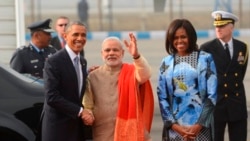“The discovery that has impressed me most deeply since arriving in India more than one year ago,” said U.S. Ambassador to India Richard Verma, “is the profound depth of the bonds between the peoples of our two countries.”
Speaking at Virginia Commonwealth University, March 17th, Ambassador Verma noted:
“The thousands of individual journeys that together make up this mosaic of friendship are not limited to statesmen or multinational executives. It is composed of the daily efforts of countless Americans and Indians working in their adopted communities to advance the values our countries both hold dear.”
“In Delhi,” he said, “I see them every day, for instance through the efforts of James Thurston, who is working with governments in India to help ensure that mobile phones include applications for the visually impaired. And here in the United States, we are fortunate to have among us Indian-Americans like Pradeep Kaleka, who, since his own father's murder in an act of hatred at the Sikh Temple in Wisconsin, has worked tirelessly, through his organization Serve to Unite, to turn despair into hope by teaching America’s youth that the redemptive power of tolerance and acceptance transcends race, religion, or national origin.”
2015, Ambassador Verma pointed out, was a very strong year in US - India relations. “I could go through all the categories and data that shows a record-breaking year in two-way trade (over $100 billion), number of Indian students in the US (over 135,000), [and] the number of Indian visitors to the US (over 1.1 million) and so on,” he said. “But perhaps, I can better demonstrate the increasing closeness between our two countries through a few illustrations of our work together.”
These include U.S. – India cooperation on the historic agreement reached in Paris to combat climate change, increased U.S. - India cooperation on maritime security, and partnership between American and Indian health researchers and medical professionals to help end TB in India.
“The United States and India are different countries,” said Ambassador Verma, “and will not always see eye-to-eye on every issue, but the journeys by our visionaries, thought leaders, and everyday citizens looking to serve their fellow human beings will continue to increase, laying the groundwork of the most promising relationship for the future of the planet and the human race.”

















